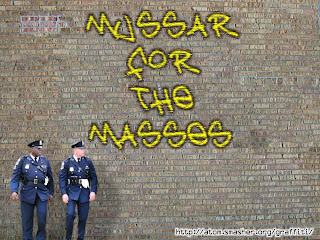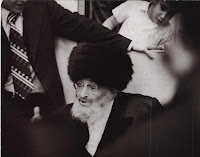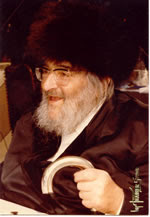I don’t get. I know, this isn’t the best way to start of a blog post, but really, I don’t get it.
I am not a rabbi, academic scholar, historian, or an author of a book on the Mussar movement. I am simply just writing down how I see things. Others, who are much more learned than I or more intellectual might have a totally different spin on this.
Over the years and even as recent as last week, I’ve shmoozed with people about learning mussar and why I feel it has “worked” for me. Those who have had a yeshiva high school background tend to have a very negative view of mussar or, as someone recently told me, feel that it’s meant to be studied on an individual basis and not as part of a group. When I then ask these people about their opinion of mussar, it’s almost exclusively regulated to them being made to feel guilty, not good enough, or like they are “nothing”. When suggesting to start a mussar va’ad (group dedicated to working on middos on a regular basis), the interest is slim to none.
This is the part that I don’t get. Let’s take a look at a very short list of talmidim of the Slobodka school of mussar (Yeshiva Knesses Yisrael) and the yeshivos in America they were associated with (in no particular order):
- Rabbi Yitzchok Hutner- RY, Chaim Berlin
- Rabbi Yaakov Kamenetsky- RY, Torah V’Daas
- Rabbi Aharon Kotler- RY,Beth Medrash Govoha (Lakewood)
- Rabbi Dovid Leibowitz- RY, Chofetz Chaim
- Rabbi Yaakov Yitzchok Ruderman- RY, Ner Israel
- Rabbi Nissan Yablonsky -RY, Hebrew Theological Seminary (Skokie)
- Rabbi Yaakov Moshe Lessin- Mashgiach, REITS (Yeshiva University)
Of course there are plenty more, but these represent the roots of some of the more “major” yeshivos in America. These Rabbis were all products of Slobodka, where the concept of Gadlus haAdam, the greatness of man, was the modus operandi of the yeshiva. Yet, time after time, mussar gets a bad rap. Tochacha (rebuke) is mussar, but Mussar is not just rebuke, sort of like a square is a rhombus, but a rhombus isn’t… a square.
It could be argued that for some reason in America the “Novardok” derech didn’t really translate over in the United States. If the thrust of Slobodka was to build one up and show them their own inner greatness, then how did Mussar become so negative? I really don’t know. I have an idea, but it’s based on me being an outsider. I was zoche to spend a number of years learning in a yeshiva environment, post-high school, but I didn’t “go through the system”. Teenagers, by nature, rebel against authority. Even the frummest of the frum rebels in some way. It might be by taking upon chumros or by speeding or extending a shemoneh esray, but there’s some type of rebellion against the status quo going on.
I think most adults who when through the “system” probably got their mussar exposure at the wrong time. Had they been taught and exposed during elementary school to the concept that there’s a desire to grow towards greatness and perfecting middos, then the “average” adult might have a different view towards mussar (and if you you don’t read this blog regularly, by “mussar” I mean any learning that makes you a better Jew).
If I were to approach you after shul and say, “You need to improve A,B and C”, you’d probably walk away thinking, “Who is Neil Harris to tell me what I need to improve upon?”
However, if you were to see a flyer in you shul that stated, “How can you not afford to spend 15 minutes working on making yourself a better person?”, then you might give it a thought.
It’s not just the approach, it’s the timing. There’s no quick solution. No magic pill that will give you and your children what’s termed “good middos”. It’s simply a willingness to accept a shift in effort. I could easily spend two hours “beating” the levels on Star Wars Lego for Wii, but to sit for two hours and work on patience takes, well patience.
Working on who we are just doesn’t seem like it’s on the radar for the general observant public these days.


.jpg)



